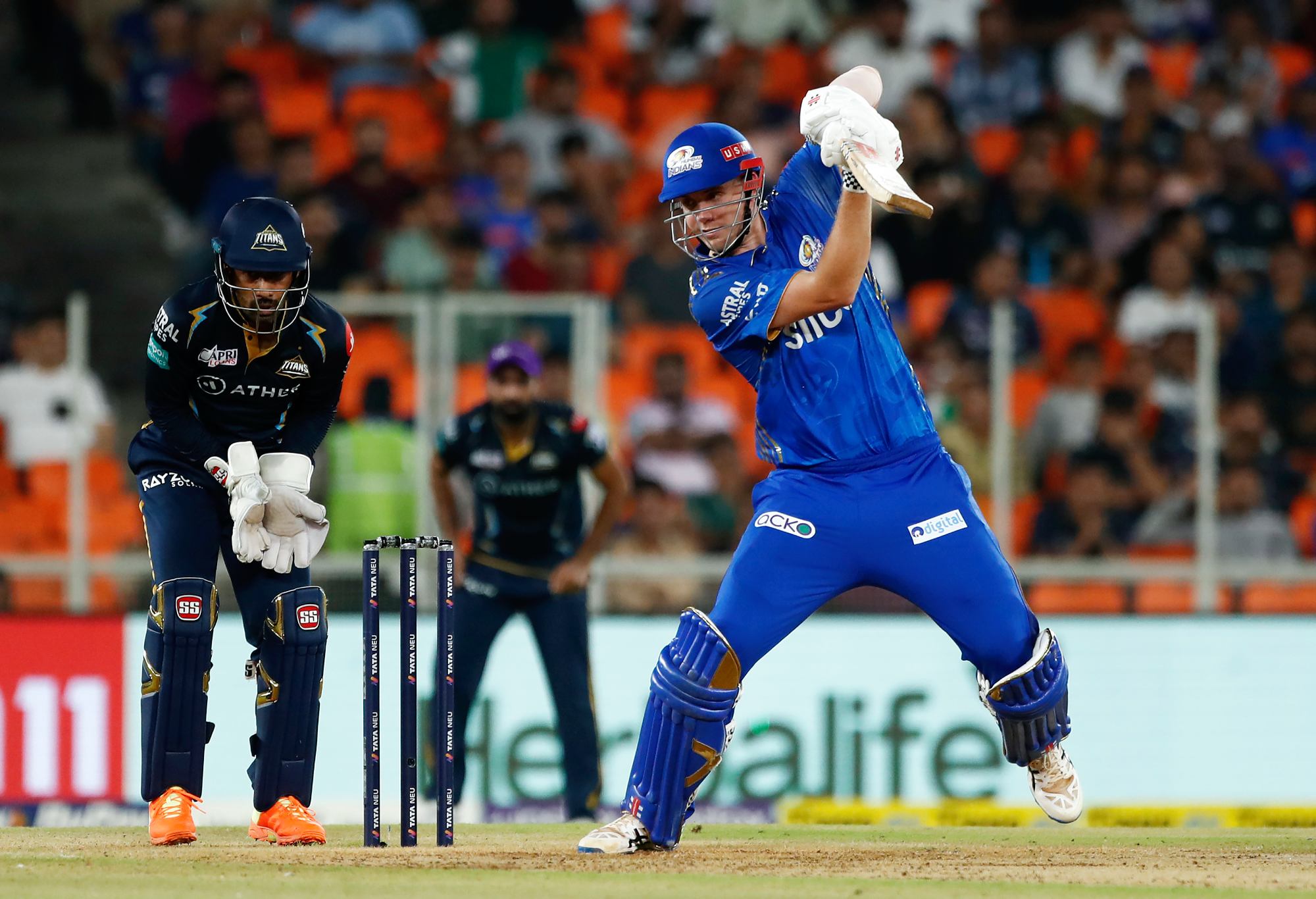MUST WATCH: JFM obliterates IPL bowling attack - even Bumrah! - for 15-ball 50... and keeps going
A six-laden, 27-ball 84 from Jake Fraser-McGurk to continue his outrageous debut IPL!
An interesting thing happened recently in the International League T20 (ILT20) over in the United Arab Emirates. In match 24 of the competition, Gulf Giants batter and UAE U19 captain Aayan Afzal Khan was forced to retire due to a poor strike rate, after struggling to a score of 10 runs from 17 balls.
To do this in a situation where a batter isn’t quite having his best night seems extremely harsh, but Giants coach and Zimbabwean cricket legend Andy Flower made the call to pull Khan for the team’s benefit in order to get to his late-order hitting options of Jamie Overton, Chris Jordan and Dominic Drakes.

Cameron Green bats for the Mumbai Indians in the Indian Premier League. (Photo by Pankaj Nangia/Getty Images)
The Gulf Giants were able to have a late flurry of runs with the help of Drakes’ 24 off 12, helping to pull off an unlikely victory in a low-scoring game.
So – does the importance of the team’s performance outweigh the batter’s diminished confidence and dignity?
With the spread of T20 cricket worldwide, there is no doubt this will become a more prevalent tactic and become the norm in white-ball cricket especially.
Last year in the IPL, Indian batsmen Sai Sudharsan became the third player in the season to be retired out for tactical reasons. This time Sudharsan was on 43 off 31 balls and striking at a very solid 138.7. But having players like Rashid Khan in the sheds, who specialises in power hitting at the death, it was the choice of the coaching staff to make the bold call for the betterment of winning the match.
There are two ways players can go about this; players can embrace the team before their own performances and accept the fact you’re not always going to have a great game, or there’s the other side, where players may feel like they’re walking on eggshells.
Cricket is no doubt physical but it is played through the ears as well. You wouldn’t want a playing group afraid to make a mistake or stress out whether the coach is contemplating retiring them after a slow start. Most players around the world have enough power and ability to score 360 degrees to catch up after slow starts, so the tactic would be testing the trust of the playing group.
It feels like teams who are bold seem to be the most successful and more teams who decide to implement this more will no doubt exert maximum reward. Even in red ball cricket, a fearless mentality does wonders -just look at what we have seen with ‘Bazball’ and the England team.

Could a tactical retirement have helped Matt Short and the Adelaide Strikers in the BBL finals? (Photo by Kelly Barnes/Getty Images)
Too many times in white ball cricket do we see sides too scared to retire batters who are chewing up too many dot balls. In the BBL 13 Challenger game this year, the Adelaide Strikers needed a mammoth 215 to go into the final to take on the Sixers, mostly due to an amazing batting display by Josh Brown. Adelaide’s opening pair of D’Arcy Short and Matthew Short needed just under 12 an over from the start.
On this occasion, D’Arcy Short couldn’t quite find the gaps and chewed too many dot balls before getting dismissed for 7 off 13 balls. On top of this, he put added pressure on Matthew Short, the leading run scorer in the BBL. A short while later both were gone.
Hindsight is handy of course, but if the Strikers were braver they could have retired D’Arcy Short to bring in Jake Weatherald, who was seeing them like beachballs at the back end of the tournament. Who knows what could have happened.
The days of batter strike rates hovering around the 100-110 mark rate seem to be over – maintaining high strike rates during the middle overs coming out of the powerplay is everything teams are striving for.
This move could potentially change white ball cricket forever – once more teams decide to do it and take their chances.